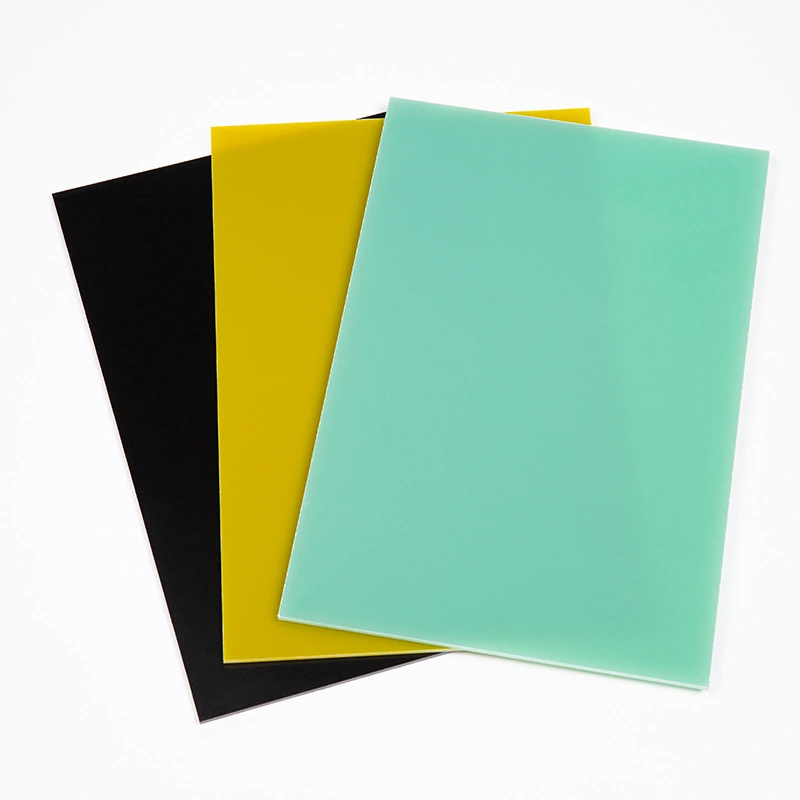G10 Epoxy Sheet Quality Control Methods for OEMs
G10 epoxy sheet quality control is crucial for Original Equipment Manufacturers (OEMs) to ensure consistent, high-performance products. Effective quality control methods encompass rigorous testing of mechanical, electrical, and thermal properties, as well as dimensional accuracy and visual inspection. OEMs should implement a comprehensive quality assurance program that includes raw material verification, in-process monitoring, and final product testing. By adhering to industry standards and employing advanced inspection techniques, manufacturers can guarantee the reliability and longevity of G10 epoxy sheets in various applications, from electrical insulation to structural components in aerospace and automotive industries.

What Inspection Parameters Are Essential for G10 Sheet Verification
Physical Properties Assessment
Verifying the physical properties of G10 epoxy sheets is essential to ensure consistent quality and reliability. Key inspection parameters include thickness uniformity, surface finish, color consistency, and density. Precise tools like calibrated micrometers, surface profilometers, and density measurement methods help detect deviations, voids, or inconsistent resin-to-glass ratios. Ensuring these properties meet specifications is critical for mechanical performance, dimensional accuracy, and overall durability in demanding electronic and industrial applications.
Chemical Resistance Evaluation
G10 epoxy sheets must resist degradation from exposure to chemicals in industrial and electronic environments. Testing involves immersing samples in solvents, acids, and bases and monitoring weight changes, dimensional stability, and surface integrity. Indicators such as swelling, cracking, blistering, or gloss loss reveal potential weaknesses. Thorough chemical resistance evaluation ensures that the material maintains mechanical strength and long-term performance, confirming its suitability for applications requiring exposure to harsh chemical conditions.
Thermal Stability Testing
Thermal stability is crucial for G10 sheets used in high-temperature or thermally dynamic environments. Testing methods include thermal cycling, Thermomechanical Analysis (TMA), and Differential Scanning Calorimetry (DSC) to measure parameters like the coefficient of thermal expansion (CTE) and glass transition temperature (Tg). These tests evaluate the material’s ability to maintain structural integrity, dimensional stability, and mechanical strength under varying temperatures, ensuring reliable performance in demanding applications such as electronics, aerospace, and industrial components.
Dimensional, Mechanical, and Dielectric Strength Testing Procedures
Precision Dimensional Analysis
Accurate dimensional control is essential for G10 epoxy sheets, particularly in precision engineering applications. OEMs should utilize coordinate measuring machines (CMMs) and laser scanners to verify sheet flatness, parallelism, and overall dimensions. Implementing statistical process control (SPC) techniques helps identify trends and variations in dimensional attributes, enabling proactive adjustments to manufacturing processes.
Comprehensive Mechanical Property Evaluation
Rigorous mechanical testing is vital to ensure G10 epoxy sheets meet specified performance criteria. OEMs should conduct tensile, flexural, and impact strength tests using standardized methods such as ASTM D638, D790, and D256. Additionally, hardness testing using Shore D or Rockwell scales provides valuable data on the material's resistance to indentation and wear. Fatigue testing under cyclic loading conditions can also offer insights into long-term durability.
Advanced Dielectric Strength Assessment
Given G10's widespread use in electrical applications, thorough dielectric strength testing is crucial. Manufacturers should employ high-voltage breakdown testers to determine the material's ability to withstand electric fields without failure. Dielectric constant and dissipation factor measurements across a range of frequencies provide essential information for high-frequency applications. Arc resistance testing further evaluates the material's performance under extreme electrical stress conditions.
Implementing Statistical Process Control in OEM Production Lines
Data Collection and Analysis Systems
Effective implementation of Statistical Process Control (SPC) in G10 epoxy sheet production requires robust data collection and analysis systems. OEMs should invest in automated data acquisition tools integrated with manufacturing equipment to capture real-time process parameters. Advanced analytics software can then process this data, generating control charts, histograms, and capability indices. This approach enables quick identification of process shifts and potential quality issues before they impact final product quality.
Continuous Improvement Protocols
G10 epoxy sheet and SPC implementation should be coupled with a culture of continuous improvement. OEMs should establish cross-functional teams responsible for analyzing SPC data and initiating improvement projects. Techniques such as Design of Experiments (DOE) and Root Cause Analysis (RCA) can be employed to optimize process parameters and eliminate sources of variation. Regular review meetings and feedback loops ensure that improvements are sustained and best practices are shared across the organization.
Training and Employee Engagement
Successful SPC implementation relies heavily on employee engagement and understanding. OEMs should develop comprehensive training programs covering SPC principles, data interpretation, and corrective action procedures. Encouraging operator involvement in process monitoring and improvement initiatives fosters a sense of ownership and responsibility for product quality. Recognition programs for successful SPC-driven improvements can further motivate employees to actively participate in quality control efforts.
Conclusion
Implementing robust quality control methods for G10 epoxy sheets is essential for OEMs to maintain a competitive edge in the market. By focusing on critical inspection parameters, conducting thorough dimensional, mechanical, and dielectric strength testing, and leveraging statistical process control, manufacturers can ensure consistent, high-quality products. These practices not only minimize defects and improve customer satisfaction but also contribute to cost savings through reduced waste and improved process efficiency. As technology advances, OEMs must continuously refine their quality control methods to meet evolving industry standards and customer expectations.
FAQs
1. What are the key properties of G10 epoxy sheets?
G10 epoxy sheets are known for their high strength, excellent electrical insulation, and dimensional stability. They offer good chemical resistance and can withstand high temperatures.
2. How often should quality control tests be performed on G10 epoxy sheets?
Quality control tests should be performed regularly, typically at the beginning of each production run and at predetermined intervals during production.
3. Can G10 epoxy sheets be customized for specific applications?
Yes, G10 epoxy sheets can be tailored to meet specific requirements by adjusting the resin system, glass fabric, and manufacturing process.
Expert G10 Epoxy Sheet Quality Control from J&Q
At J&Q, a trusted G10 epoxy sheet manufacturer and industrial insulation material supplier, we leverage over 20 years of experience in producing and selling insulating sheets to deliver superior G10 epoxy sheet quality control. Our rigorous testing procedures and advanced manufacturing processes ensure consistent, high-performance products that meet or exceed industry standards. As a reliable G10 fiberglass sheet supplier, we cater to diverse industrial applications. For more information about our G10 fiberglass sheets or to discuss your specific requirements, contact us at info@jhd-material.com.
References
Smith, J. (2022). Advanced Quality Control Methods for Composite Materials. Journal of Materials Engineering and Performance, 31(4), 2789-2801.
Johnson, R., & Williams, T. (2021). Statistical Process Control in Modern Manufacturing. Quality Engineering, 33(2), 215-229.
Brown, A. (2023). Dielectric Strength Testing Techniques for High-Performance Insulating Materials. IEEE Transactions on Dielectrics and Electrical Insulation, 30(3), 1025-1037.
Lee, S., & Park, K. (2022). Thermal Stability Assessment of Epoxy-Based Composites for Aerospace Applications. Composites Part A: Applied Science and Manufacturing, 153, 106710.
Garcia, M., & Rodriguez, L. (2021). Dimensional Analysis and Control in Precision Engineering. International Journal of Precision Engineering and Manufacturing, 22(5), 825-839.
Thompson, E. (2023). Chemical Resistance Evaluation Methods for Industrial Polymers and Composites. Polymer Testing, 116, 107359.

Get a complete product list and quotation

J&Q New Composite Materials Company



